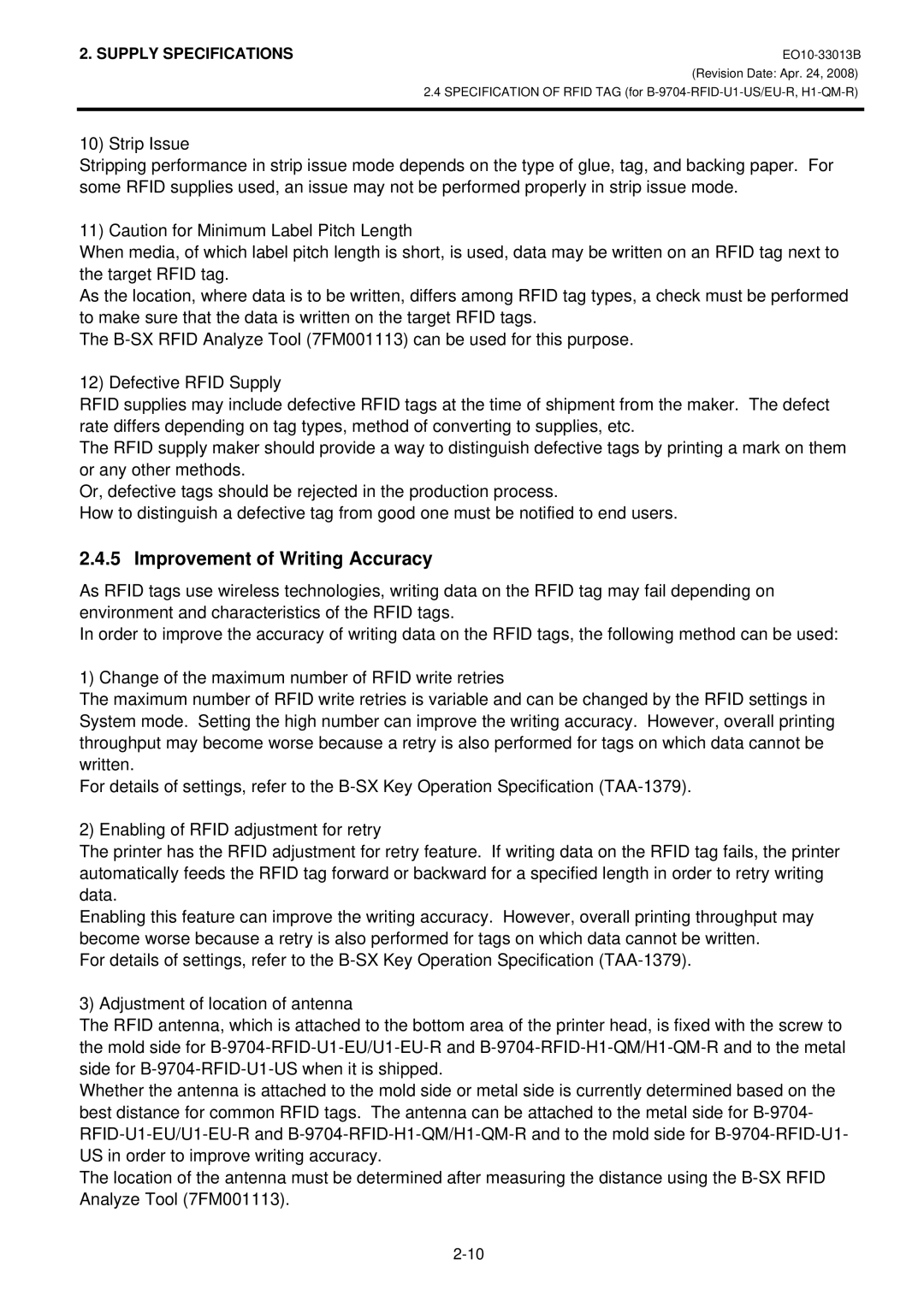2. SUPPLY SPECIFICATIONS
(Revision Date: Apr. 24, 2008)
2.4 SPECIFICATION OF RFID TAG (for
10) Strip Issue
Stripping performance in strip issue mode depends on the type of glue, tag, and backing paper. For some RFID supplies used, an issue may not be performed properly in strip issue mode.
11) Caution for Minimum Label Pitch Length
When media, of which label pitch length is short, is used, data may be written on an RFID tag next to the target RFID tag.
As the location, where data is to be written, differs among RFID tag types, a check must be performed to make sure that the data is written on the target RFID tags.
The
12) Defective RFID Supply
RFID supplies may include defective RFID tags at the time of shipment from the maker. The defect rate differs depending on tag types, method of converting to supplies, etc.
The RFID supply maker should provide a way to distinguish defective tags by printing a mark on them or any other methods.
Or, defective tags should be rejected in the production process.
How to distinguish a defective tag from good one must be notified to end users.
2.4.5 Improvement of Writing Accuracy
As RFID tags use wireless technologies, writing data on the RFID tag may fail depending on environment and characteristics of the RFID tags.
In order to improve the accuracy of writing data on the RFID tags, the following method can be used:
1) Change of the maximum number of RFID write retries
The maximum number of RFID write retries is variable and can be changed by the RFID settings in System mode. Setting the high number can improve the writing accuracy. However, overall printing throughput may become worse because a retry is also performed for tags on which data cannot be written.
For details of settings, refer to the
2) Enabling of RFID adjustment for retry
The printer has the RFID adjustment for retry feature. If writing data on the RFID tag fails, the printer automatically feeds the RFID tag forward or backward for a specified length in order to retry writing data.
Enabling this feature can improve the writing accuracy. However, overall printing throughput may become worse because a retry is also performed for tags on which data cannot be written.
For details of settings, refer to the
3) Adjustment of location of antenna
The RFID antenna, which is attached to the bottom area of the printer head, is fixed with the screw to the mold side for
Whether the antenna is attached to the mold side or metal side is currently determined based on the best distance for common RFID tags. The antenna can be attached to the metal side for
The location of the antenna must be determined after measuring the distance using the
